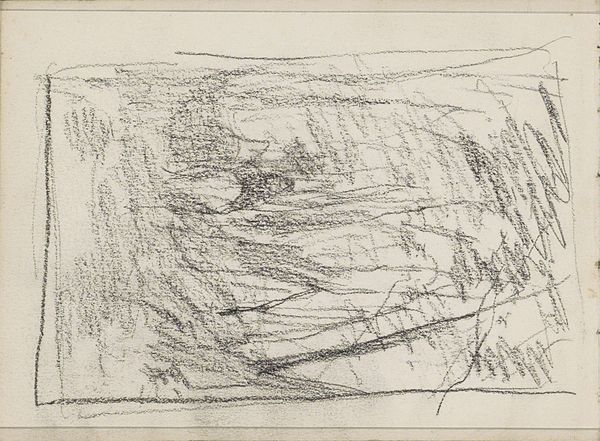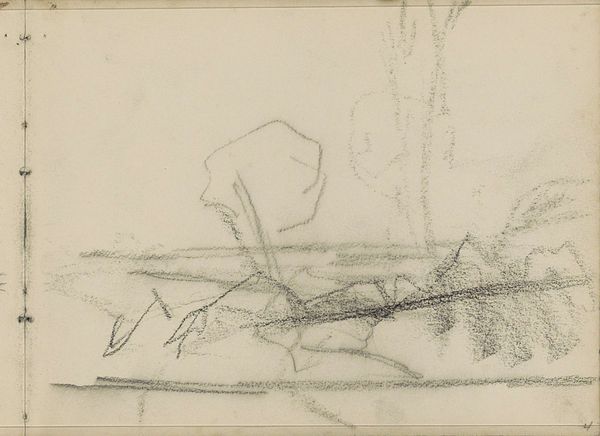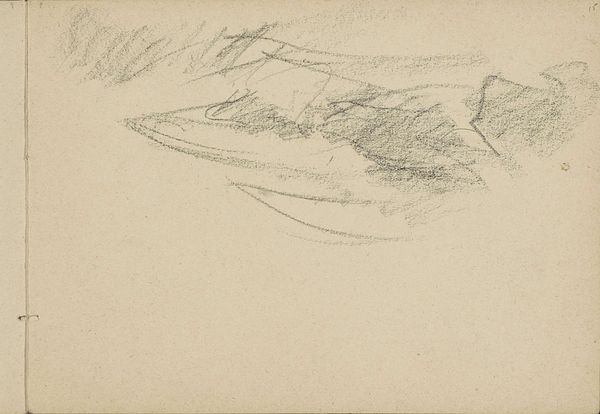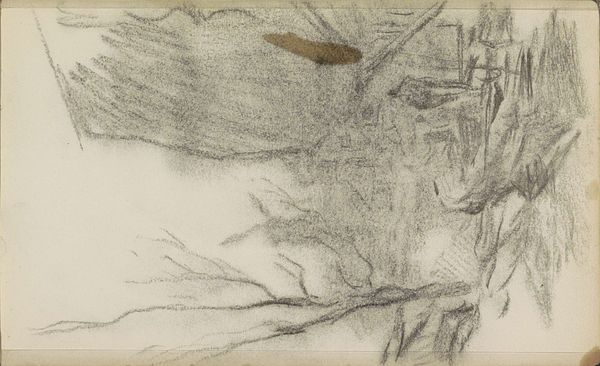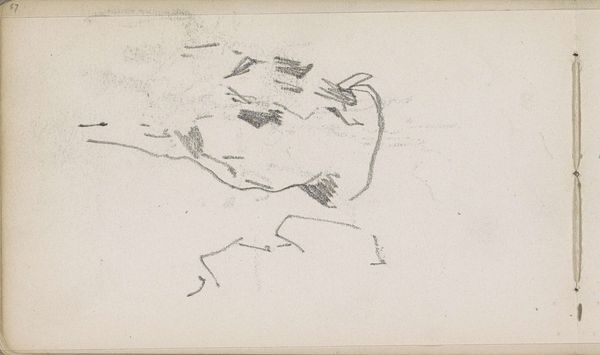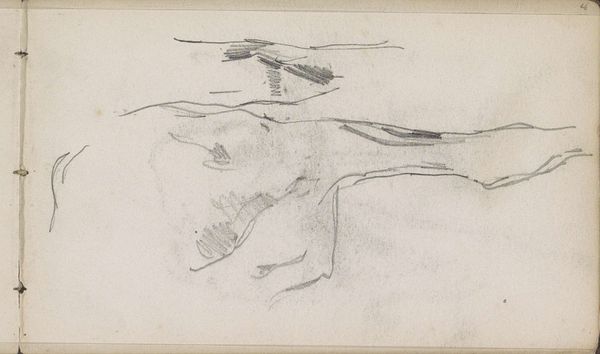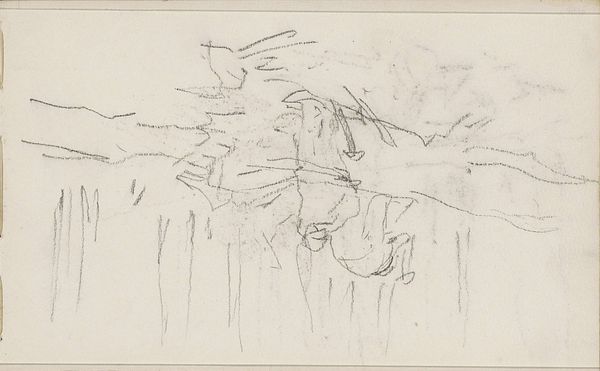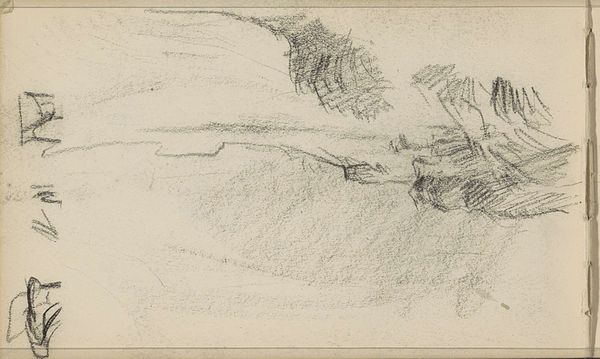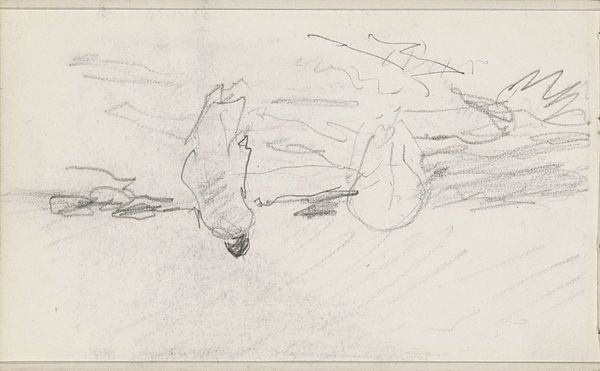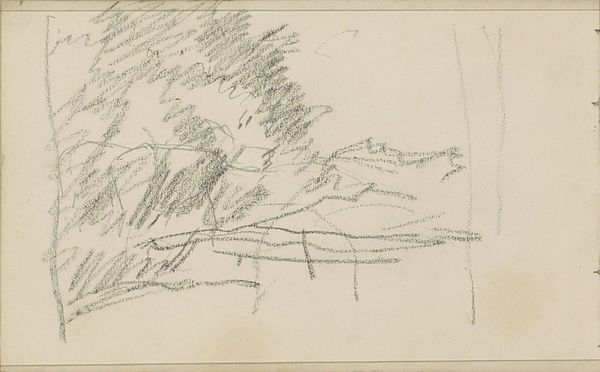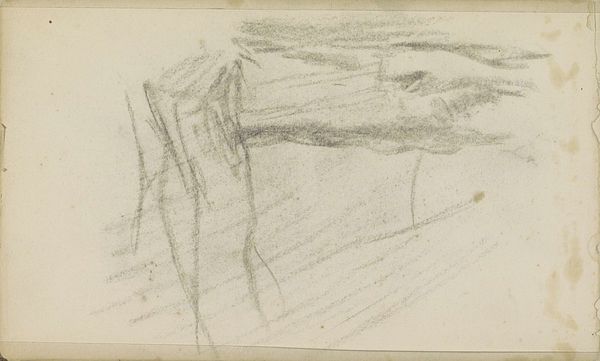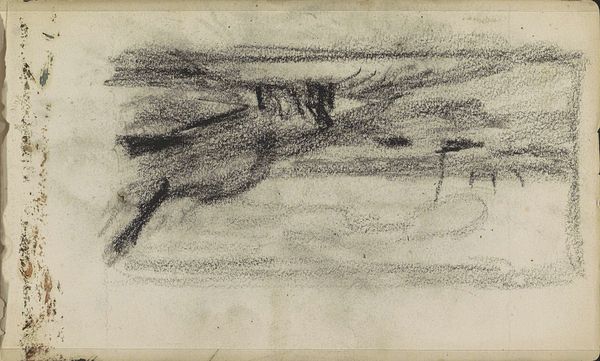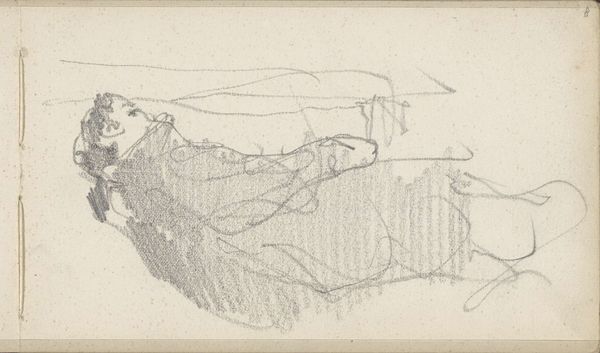
Copyright: Rijks Museum: Open Domain
Editor: Here we have Isaac Israels's "Studie," made sometime between 1875 and 1934, rendered in pencil. It feels quite abstract to me, like a fleeting impression captured on paper. What strikes you when you look at this piece? Curator: Immediately, the interplay of line and shadow arrests my attention. Note how Israels employs a stark contrast, setting dense graphite concentrations against areas of bare paper. This opposition yields a palpable sense of depth, despite the medium's inherent flatness. Editor: I see what you mean. It’s not just a simple sketch, is it? It’s about the *relationships* between the marks. What do you make of the composition itself? Curator: Observe the asymmetry; the visual weight is largely concentrated on the right side of the sheet, establishing an inherent dynamic tension. Further, the deliberate ambiguity of form resists easy categorization. One could ponder whether this incompleteness serves a conceptual function, urging viewers towards independent interpretation. Editor: That’s fascinating. I initially saw it as unfinished, but you’re suggesting it's a deliberate artistic choice? Curator: Precisely. The artist masterfully exploits the capacity of line and value to conjure a world which shimmers between the real and the suggested. Notice, for instance, how the strategic arrangement of strokes functions almost as a semiotic code, prompting our perceptual apparatus to resolve a coherent figure out of seemingly disparate marks. Editor: So, it’s about pushing the boundaries of representation itself. That makes me appreciate the work in a completely new way. Thank you! Curator: Indeed. The power lies in its subtle complexities, encouraging contemplation beyond initial appearances.
Comments
No comments
Be the first to comment and join the conversation on the ultimate creative platform.
